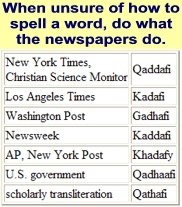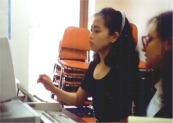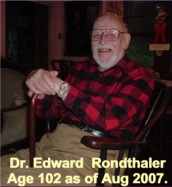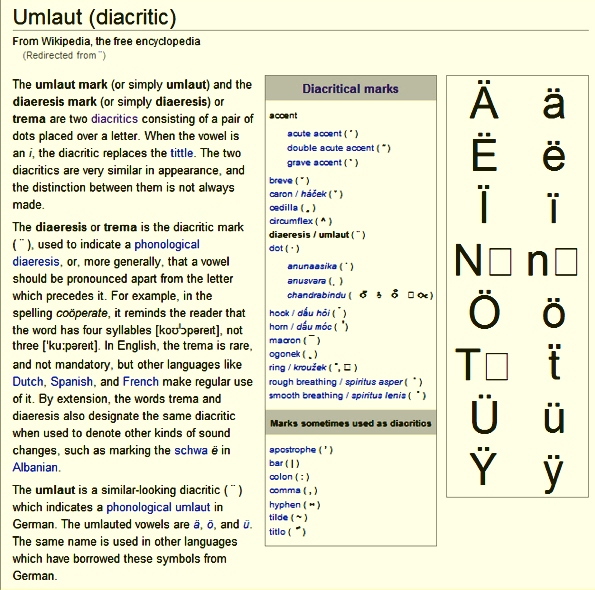
A New Strategy Related to Teaching
English as a Second or Foreign Language.
ESL EFL
Staff at the American Literacy Council analyzed a list of the 44,000 most-used English words, then separated the corpus into two separate lists. One of these lists is a group of 7,000 words that should be extremely useful to teachers of English as a Second or Foreign Language. It seems unlikely that this list has been identified previously.
The list (link below) displays only those English words that are "phonically pure" or nearly so. While it's popular to identify the tens of thousands of inconsistencies in English spelling, it may have gone unnoticed that there are 7,000 words that are spelled "correctly" all scattered through each English dictionary. The words in this base-line list use letters in uniform ways to signal what speech sounds are desired. The use of letters in this list is extremely consistent throughout the whole list.
Click here to see a list of 7,000 ESL words that are spelled with phonic consistency.
Ordinary phonic lists for children age 5 to 7 cover perhaps 300 words. But here you have 7,000 words right out of the dictionaries, unchanged, whose spellings accurately reflect sounds in a consistent way.
 Excluded from this list are 37,000 other words that represent the full range of confusing and misleading spelling signals - ill-formed vowel letters, dangling "E," and extra letters as in "likE" and "straW" and "toE" and "yauGHt" and "receIPt" and 10,000 others.
Excluded from this list are 37,000 other words that represent the full range of confusing and misleading spelling signals - ill-formed vowel letters, dangling "E," and extra letters as in "likE" and "straW" and "toE" and "yauGHt" and "receIPt" and 10,000 others.
If an ESL student doesn't have to confront 37,000 words that have spelling inconsistencies until after mastering words and sentences that use well-formed syllables and letters to represent sounds, the student will gain a foundation on which to expand later into the arbitrary spellings found in the rejected list of 37,000 words. They will learn early to trust letters as indicators of sounds to be used when pronouncing words.

We adult readers have already absorbed and embraced firmly the various letter combinations that comprise most English words, forgetting that we painfully and slowly glummed onto thousands of spelling peculiarities with the help of a teacher or parent. The process required long hours of spelling classes running from kindergarten through 5th or 6th school grades in the US. If you know how to read English, it's because many kind people helped you across a number of years.
Words that aren't spelled with phonic consistency look perfectly normal to us who can read. Absolutely. But beginning ESL students don't know what we know and they can benefit significantly if they first encounter phrases and sentences that use the best pure phonically-spelled words that we can find - words that just happen to use letters in consistent ways. Later students will have to face unexplainable strange exceptions and non-phonic English spellings - but please, not in the first weeks or months.
Teachers already know this: there are hundreds of examples of the confusing rules about English spelling - and many books written about it. Math wouldn't exist if 4 sometimes meant 13. But sometimes "UI" wants us to say "OO" as in "BRUISE." English Spelling is the only medium that inflicts 81% brutal hi-decibel static on the pronunciation and reading of words. Without that level of noise, ESL students might graduate in a few weeks. What if the telephone was 80% static and you had to take lessons on how to hear voices above ear-piercing static?

The "OO" sound in root and moon is perfectly represented with the two "OO" letters.
How nice! The "OO" sound is such a clear signal that it should always be represented that way. And in the enclosed list of 7,000 words for ESL teachers to use in making worksheets and sentences for student practice, the "OO" sound IS used consistently throughout the whole list. For example, Roof, Goof, Booth, Aloof, Moon, Hoot, Coop, Droop, Loop, and many dozens more are in this list and they all use "OO" to signal what sound to make - few if any exceptions.
Rejected from this list are words in which all sorts of other letters are supposed to signal us to make the "OO" sound. A word like CREW requires an "OO" sound but the letter "O" is nowhere to be found. So CREW was excluded from this list - and also JUTE, BLUE, RUE, SALUTE, DILUTE, BRUTE, FLEW, GLUE, TRUTH, RECRUIT, CANOE, and many other ill-formed untrustworthy letter combinations all secretly hinting that we ought to say "OO" but the spelling doesn't actually show the cue. If "OO" works so well as a cue for sounding out the "OO" sound, 19 other letter combinations that signal the "OO" sound are bound to be misleading, confusing, and frustrating to an ESL learner, especially at the beginning of their struggle toward literacy..
Why stun or stunt an ESL student with words that don't accurately reveal what sounds they represent? Instead, let's enable students to develop a foundation by using words from this "Baseline List" of 7,000 words that are already phonic or very nearly so. Give them a break. There is a body of 7,000 words to work with where inconsistent spellings are invisible.
Don't forget, ESL students not only want to learn how to pronounce "Booth, Aloof, Moon, and Root," they probably don't know yet what these words mean. They're up against a steep learning experience, so yes, give them a break by using words from this list of 7,000 phonically-accurate words.
ESL teachers often deal with frustrated students who are looking for some logical relationship between the letters they see and the sounds they're supposed to speak - all the while thrust-upon with well-meaning exercise sheets containing all sorts of words.
Student confusion is understandable. For example, the "OO" sound is actually represented in nineteen other random ways than with just the "OO" spelling. Without this list of 7,000 words, an ESL student may be expected to sound out the "OO" sound when there's no "O" anywhere in the word, as in FRUIT, FLU, RULE, BRUISE, SLEUTH, LUNE, DUNE, DILUTE, and several hundred other misleading variations. Save these for later, please.
looking for some logical relationship between the letters they see and the sounds they're supposed to speak - all the while thrust-upon with well-meaning exercise sheets containing all sorts of words.
Student confusion is understandable. For example, the "OO" sound is actually represented in nineteen other random ways than with just the "OO" spelling. Without this list of 7,000 words, an ESL student may be expected to sound out the "OO" sound when there's no "O" anywhere in the word, as in FRUIT, FLU, RULE, BRUISE, SLEUTH, LUNE, DUNE, DILUTE, and several hundred other misleading variations. Save these for later, please.
You can see why those "strangely-spelled" words were omitted from this list of phonically-pure spellings. Remember, "OO" is only one vowel sound among many that could be illustrated - and many consonants are equally misleading. By the way, we had to leave BLOOD out of this phonic list because "OO" doesn't cue us this time to make the "OO" sound, otherwise an early ESL student would expect "BLOOD" to be pronounced "BLUED." So we left it out of this list. (See elsewhere a scientific analysis of spelling variants on this web site.)
This list of nearly pure phonic spellings (what you see is what you sound out) should enable creative phrases and sentences to be constructed by teachers according to their student's needs. Given the current state of the language and current dictionary standards, these words, culled from the standard dictionary, give teachers their best hope for directing ESL students toward successful "sounding out" of syllables. The letters in these 7,000 words can be trusted. They mean what they signal almost every time.
The link above this section displays all of the 7,000 recommended ESL words. The most used words are at the top of the list. That is, words are in descending order of importance. If you wish to retrieve the same words sorted into alphabetical order, then
Click Here to Open the Alphabetical List
 Since these words came from standard dictionaries, there were a few words not suited for beginning ESL students. But, an ESL teacher is more aware than remote researchers of the type and level of words that any given ESL student needs to see and speak. Only a few words were omitted from the lists - names of body parts and functions, sexual terms, curse words, and a few archaic "hath, doth" types of words. Other than that these words luckily happen to be spelled just like they sound in nearly all cases.
Since these words came from standard dictionaries, there were a few words not suited for beginning ESL students. But, an ESL teacher is more aware than remote researchers of the type and level of words that any given ESL student needs to see and speak. Only a few words were omitted from the lists - names of body parts and functions, sexual terms, curse words, and a few archaic "hath, doth" types of words. Other than that these words luckily happen to be spelled just like they sound in nearly all cases.
With this list of 7000 words, we must be honest. We're stacking the deck here. We're selecting only those cards from the deck that we want to play with. These 7,044 words happen to be spelled in phonically accurate ways but this does not give students the full picture. We're hiding something. We're temporarily hiding 37,282 other words that are spelled in non-uniform ways - those words that use almost any combination of letters to represent one or another of our 42 English speech sounds.
To be perfectly clear, 7,044 "good" words divided by 37,282 rejected words, shows that only 18.9 percent of our normal English words are close to phonic purity. It's sad, but approximately 81.1% of our English words are spelled in irregular ways. If scientific and medical terms had been included, the percentage would be worse. For this project only the 44,326 most-used English words were studied - they were identified by Brown University some years ago. These 44,326 words comprise a pretty nice list. Few people actually have a vocabulary above that number - except when biological, zoological, scientific, musical, and medical terms are further embraced by specialists and scientists.
You can see the whole list of 44,326 words if you wish - with "good" and "less-good" words interspersed Click Here (You must have Microsoft Excel (tm) to open this XLS file.)
Or you can see only the 37,282 less-than-phonic words as a single file if you wish.
Click Here (requires Excel - an XLS file). If all these "excluded" words look normal to you, it's because you learned to read so long ago that the irregularities of English spelling have been permanently accepted by you, embraced as right and good, memorized, seen as being "spelled correctly," even charming, just the way Moses captured them on the mountain during his first trip. (Yes, we know better.) If this seems true somehow, you're probably not tutoring foreign-born students nor teaching people how to speak and read.
For the sake of pedagogy and to lay a foundation with ESL students, it's critical that they experience from the start words whose spellings can be trusted. They must come to believe that there's a general normal logic in the way that letters are "normally" used - or ought to be used as a baseline in this less-than-perfect world.
 ESL students need to be convinced there's a definite method for sounding out syllables and phonemes and that in many cases letters do give clear reliable signals about the sounds that are to be spoken or imagined. Later when this belief is secure, then other words with variant spellings can be introduced. Words containing "TION" (often pronounced "SHUN" - but not always) would add perhaps 1,000 more words to this vocabulary list and these "TION" variances would probably be understood and adopted with ease as a second excursion into the splish-splash of letters called English Spelling..
ESL students need to be convinced there's a definite method for sounding out syllables and phonemes and that in many cases letters do give clear reliable signals about the sounds that are to be spoken or imagined. Later when this belief is secure, then other words with variant spellings can be introduced. Words containing "TION" (often pronounced "SHUN" - but not always) would add perhaps 1,000 more words to this vocabulary list and these "TION" variances would probably be understood and adopted with ease as a second excursion into the splish-splash of letters called English Spelling..
Later, life itself and the full milieu of printed materials will "throw the book at them" relentlessly - that life-long guilt-ridden spelling uncertainty that continues on and on. Admit it, you probably still reach for a dictionary sometimes or click on the spell checker once in a while. And heaven help if you let even a single misspelled word slip by. (Is it mispelled or misspelled? Are you sure? Can't remember ?)
Obviously in various regions and nations a number of English words are spoken differently from the NBC American Pronunciation Guide book. Many English words are spoken "differently" in South Africa, Australia, England, Ireland, Scotland, Boston, and Texas. But these delightful variations are not even one percent of the problem faced by ESL students compared with their need for reliable, consistent use of our 26 letters that have to signify the 42 speech sounds required when speaking English words.
English spelling may gradually become more simplified, a natural evolution. Simplification is somewhat visible in newly accepted spellings like "thru" and "nite" as seen in word processing documents, newspapers, and e-mail. "Desktop Computer" forces are at work. The New York Daily News shortens quite a few words like "subpoena" (for "subpoena") or "cigaret," But this baseline list of 7,000 nicely-consistent spellings can be exploited today without any simplification or childish phonics-teaching phase. The words are already in phonic form and therefore of benefit to ESL teachers and foreign-born students.
 ESL students won't wait for English spelling to be simplified or improved - they want to learn to read English right now, identify medicine labels, read want ads, compare ads about store sales, take driver's license tests, and read street signs. This list can speed students toward understanding how letters representing phonemes and syllables ought to be trusted to signal how a syllable should normally be spoken. Don't introduce "static" until much later. Let them deal with the other 37,000 unruly spellings next year.
ESL students won't wait for English spelling to be simplified or improved - they want to learn to read English right now, identify medicine labels, read want ads, compare ads about store sales, take driver's license tests, and read street signs. This list can speed students toward understanding how letters representing phonemes and syllables ought to be trusted to signal how a syllable should normally be spoken. Don't introduce "static" until much later. Let them deal with the other 37,000 unruly spellings next year.
As a postscript, the ALC staff do not view these word lists as dogmatic, perfect, or enforceable. They should not be the basis (yet) for a "Phonic-purist Movement." If you find a few useful words to add to your worksheets that are not on this word list - no one will know - except our enforcement police who secretly monitor global ESL activities through our Skype video-cam system. - yes even you.
Maybe we missed a few purely-phonic words, but don't form national conferences or denominational-divides based on these words. These perfectly-spelled words have always been there, but it took over twenty years of Dr Rondthaler's plodding efforts to isolate all the sounds in these 44,000 words and then he suggested an arrangement of letters that would be consistent throughout the entire corpus, encompassing most of the abbreviated English dictionary.
Dictionary companies were made aware of these lists long ago. They ought to drop their comic unworkable pronunciation guides that clutter dictionaries. They ought to use Dr. Rondthaler's orthographically-consistent spellings as pronunciation guides, thus avoiding those horizontal lines, double dots, slanted lines, umlauts, and other diacritical markings that spoil every tenth line in a dictionary - they're all just scribbles we pretend to understand.
If you fail to see the value of these 7,000 phonically-favored ESL words, then your only other option would be to hand out the dictionary pronunciation symbols below to your ESL students. Maybe make them memorize it. What a choice - one or the other - you decide. (LOL)

Here's a list of various ALC word-list files that may be of interest to researchers
and "word tinkerers" who have nothing else to do. These are all clickable items. Some of the XLS files are slow loading because they contain columns of up to 44,000 words. Allow ample time for loading.
Baseline list of 7,000 phonic words in alphabetic order(PDF file)
Baseline list of 7,000 phonic words in order by frequency of use (PDF file)
37,000 non-phonic words in alphabetic order (Excel XLS file)
37,000 non-phonic words in order by frequency of use (Excel XLS file)
7,000 phonic-only words in alphabetic order (Excel XLS file)
7,000 phonic-only words in order by frequency of use (Excel XLS file)
All 44,000 words - interspersed - phonic and non-phonic (Excel XLS)
A compressed six column list of 7,000 phonic words in alphabetic order (PDF file)
While not required, if you use part or all of these word lists in publications, please reference this Web site which is http://AmericanLiteracy.com .
See also Sound-Write Software which enables the computer to speak these or any words - individually or in sentence form - over and over for student practice in hearing the so-called normal sound of selected English words and sentences. It also corrects "invented spellings" on the fly - even for beginning ESL students.